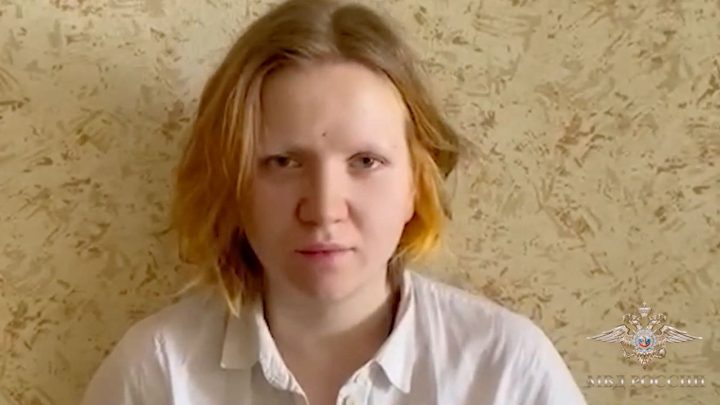The news that a young woman anti-war activist, Darya Trepova, is suspect number one in the bombing assassination of Russian pro-war blogger Vladlen Tatarsky may shock those schooled to believe that political violence is an all-male preserve. But it will come as no surprise to anyone with the sketchiest knowledge of Russian history. For in Russian politics, as Rudyard Kipling wrote, ‘the female of the species is more deadly than the male’.
Since the days of the Tsars, women have always been at the forefront of political violence in Russia. The spectacular assassination in 1881 of Tsar Alexander II, known as ‘The Liberator’ for his abolition of serfdom, was organised by a young woman named Sofia Perovskaya, the leading light in the revolutionary terrorist group calling itself Narodnaya Volya or ‘The People’s Will’.
In Russian politics, ‘the female of the species is more deadly than the male’
Sofia carried out the killing in St Petersburg, the same city where Tatarsky died. She stationed her male assassins along a route that the Tsar drove down every Sunday, crossing the Catherine Canal. One of the killers threw a bomb which killed a Cossack bodyguard but left the Tsar unscathed.
However, the Emperor insisted on speaking to the injured and his compassion sealed his fate. A second bomber lobbed his missile, which exploded at Alexander’s feet, tearing off his legs, ripping open his stomach and mutilating his face. ‘Home to the palace to die’ he gasped, and duly expired at the Winter Palace a few minutes later. Sofia and her confederates were hanged for their regicide and a church, called the Church of the Saviour on Spilled Blood, was built on the site of the assassination in expiation of the deed.
The dead Tsar’s son and heir, Alexander III, was a man of very different stamp to his liberal father. A giant who could bend iron bars with his bare hands, his reign was characterised by brutal repression of any hint of reform, let alone revolution.
When Tsarism finally died in 1917 under Alexander’s weakling son Nicholas II, the Bolsheviks paid lip service to female emancipation and made the feminist revolutionary Alexandra Kollontai their top diplomat. But it was a woman who almost brought the new regime down when she shot Lenin in 1918, soon after his Bolsheviks had seized dictatorial power.
The would-be assassin was Fanny Kaplan, a Ukrainian-born Jewess and a member of the Social Revolutionaries, leftist rivals of the Bolsheviks who violently objected to the dictatorship that the Bolsheviks were creating. Three of the bullets fired by Fanny struck Lenin as he was leaving a Moscow factory, severely wounding him and contributing to his premature death from a series of strokes in 1924.
Fanny herself was arrested and subsequently executed with a bullet fired into the back of her neck by the Cheka, the newly created Bolshevik secret police. Her deed gave the regime the excuse it needed to reintroduce the death penalty which had been abolished after the first February revolution in 1917, and gave them carte blanche to crack down on what was left of the opposition.
Whether Darya Trepova is a lone assassin, or whether, like Sofia and Fanny, she represents a wider opposition to Putin’s war, only time will tell.






Comments